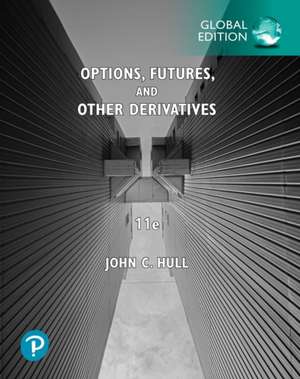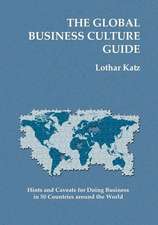Options, Futures, and Other Derivatives, Global Edition
Autor John C. Hullen Limba Engleză Paperback – 17 iun 2021
Preț: 485.04 lei
Preț vechi: 557.51 lei
-13% Nou
Puncte Express: 728
Preț estimativ în valută:
92.81€ • 96.90$ • 76.81£
92.81€ • 96.90$ • 76.81£
Carte disponibilă
Livrare economică 14-28 martie
Livrare express 28 februarie-06 martie pentru 76.67 lei
Preluare comenzi: 021 569.72.76
Specificații
ISBN-13: 9781292410654
ISBN-10: 1292410655
Pagini: 880
Dimensiuni: 201 x 254 x 47 mm
Greutate: 1.86 kg
Ediția:11th edition
Editura: Pearson
Colecția Pearson Higher Education
ISBN-10: 1292410655
Pagini: 880
Dimensiuni: 201 x 254 x 47 mm
Greutate: 1.86 kg
Ediția:11th edition
Editura: Pearson
Colecția Pearson Higher Education
Cuprins
List of Business Snapshots List of Technical Notes
1. Introduction 2. Futures markets and central counterparties 3. Hedging strategies using futures 4. Interest rates 5. Determination of forward and futures prices 6. Interest rate futures 7. Swaps 8. Securitization and the financial crisis of 2007-8 9. XVAs 10. Mechanics of options markets 11. Properties of stock options 12. Trading strategies involving options 13. Binomial trees 14. Wiener processes and It�s lemma 15. The BlackScholesMerton model 16. Employee stock options 17. Options on stock indices and currencies 18. Futures options and Blacks model 19. The Greek letters 20. Volatility smiles and Volatility Surfaces 21. Basic numerical procedures 22. Value at risk and expected shortfall 23. Estimating volatilities and correlations 24. Credit risk 25. Credit derivatives 26. Exotic options 27. More on models and numerical procedures 28. Martingales and measures 29. Interest rate derivatives: The standard market models 30. Convexity, timing, and quanto adjustments 31. Equilibrium models of the short rate 32. No-arbitrage models of the short rate 33. Modeling Forward Rates 34. Swaps Revisited 35. Energy and commodity derivatives 36. Real options 37. Derivatives mishaps and what we can learn from them
Glossary of terms DerivaGem software Major exchanges trading futures and options Tables for Nx
1. Introduction 2. Futures markets and central counterparties 3. Hedging strategies using futures 4. Interest rates 5. Determination of forward and futures prices 6. Interest rate futures 7. Swaps 8. Securitization and the financial crisis of 2007-8 9. XVAs 10. Mechanics of options markets 11. Properties of stock options 12. Trading strategies involving options 13. Binomial trees 14. Wiener processes and It�s lemma 15. The BlackScholesMerton model 16. Employee stock options 17. Options on stock indices and currencies 18. Futures options and Blacks model 19. The Greek letters 20. Volatility smiles and Volatility Surfaces 21. Basic numerical procedures 22. Value at risk and expected shortfall 23. Estimating volatilities and correlations 24. Credit risk 25. Credit derivatives 26. Exotic options 27. More on models and numerical procedures 28. Martingales and measures 29. Interest rate derivatives: The standard market models 30. Convexity, timing, and quanto adjustments 31. Equilibrium models of the short rate 32. No-arbitrage models of the short rate 33. Modeling Forward Rates 34. Swaps Revisited 35. Energy and commodity derivatives 36. Real options 37. Derivatives mishaps and what we can learn from them
Glossary of terms DerivaGem software Major exchanges trading futures and options Tables for Nx
Notă biografică
John Hull is the Maple Financial Professor of Derivatives and Risk Management at the Joseph L. Rotman School of Management, University of Toronto (UofT). In 2016, he was awarded the title of University Professor (an honour granted to only 2% of faculty at UofT). He has acted as a consultant to many financial institutions around the world and has won many teaching awards, including UofT's prestigious Northrop Frye Award.
He is an internationally recognised authority on Derivatives and Risk Management and has many publications in this area. His work has an applied focus, with his research and teaching activities including risk management, regulation and machine learning, as well as derivatives. He is co-director of Rotman's Master in Finance and Master in Financial Risk Management Programs.
He is an internationally recognised authority on Derivatives and Risk Management and has many publications in this area. His work has an applied focus, with his research and teaching activities including risk management, regulation and machine learning, as well as derivatives. He is co-director of Rotman's Master in Finance and Master in Financial Risk Management Programs.
















